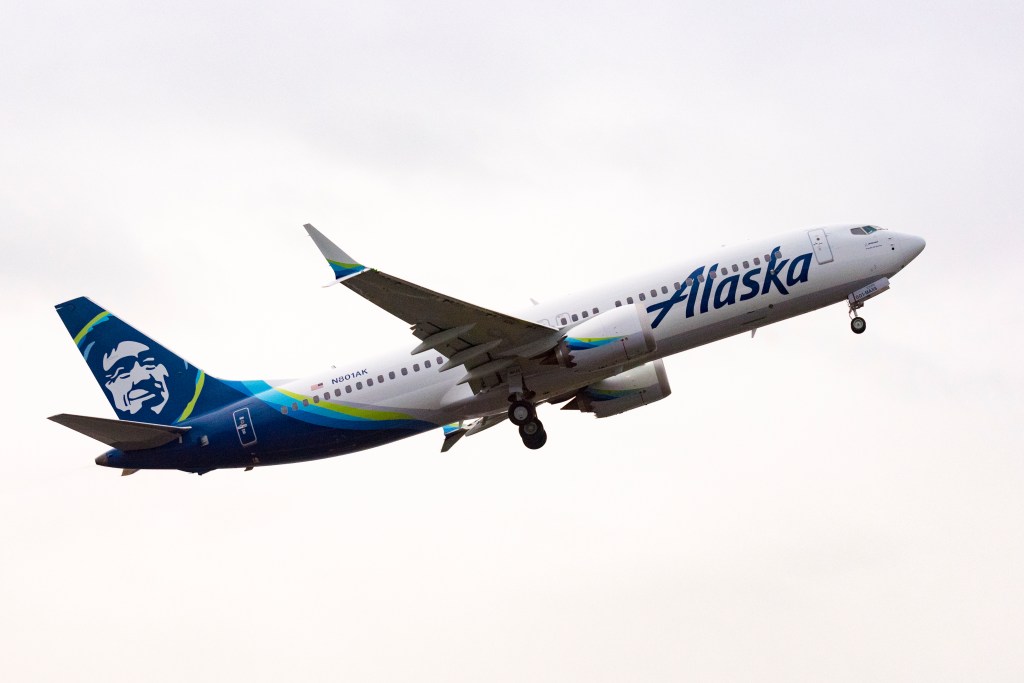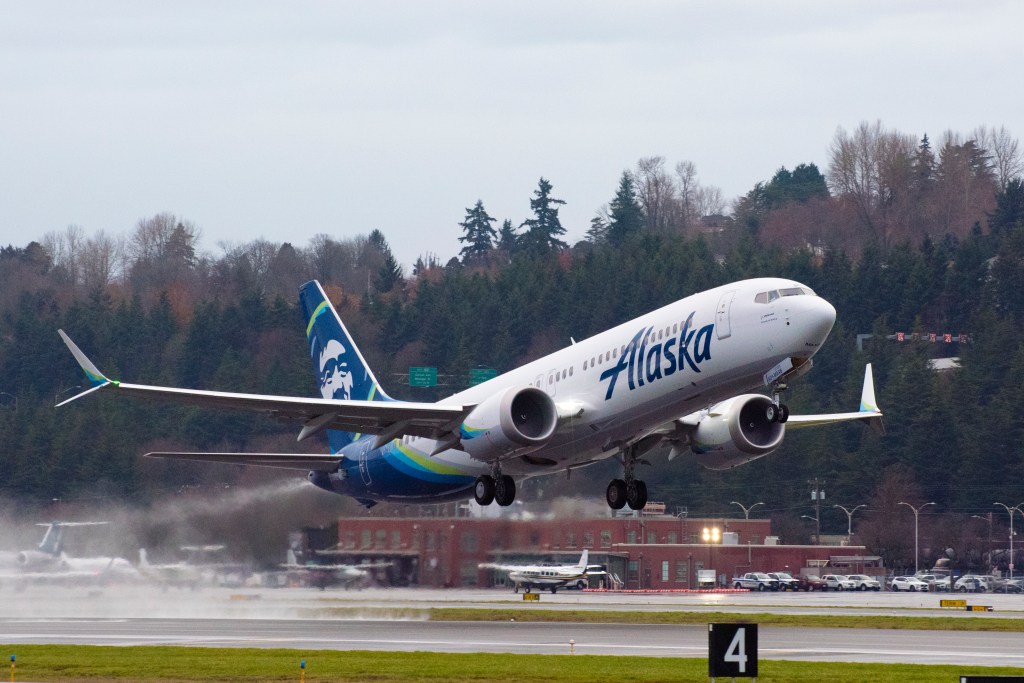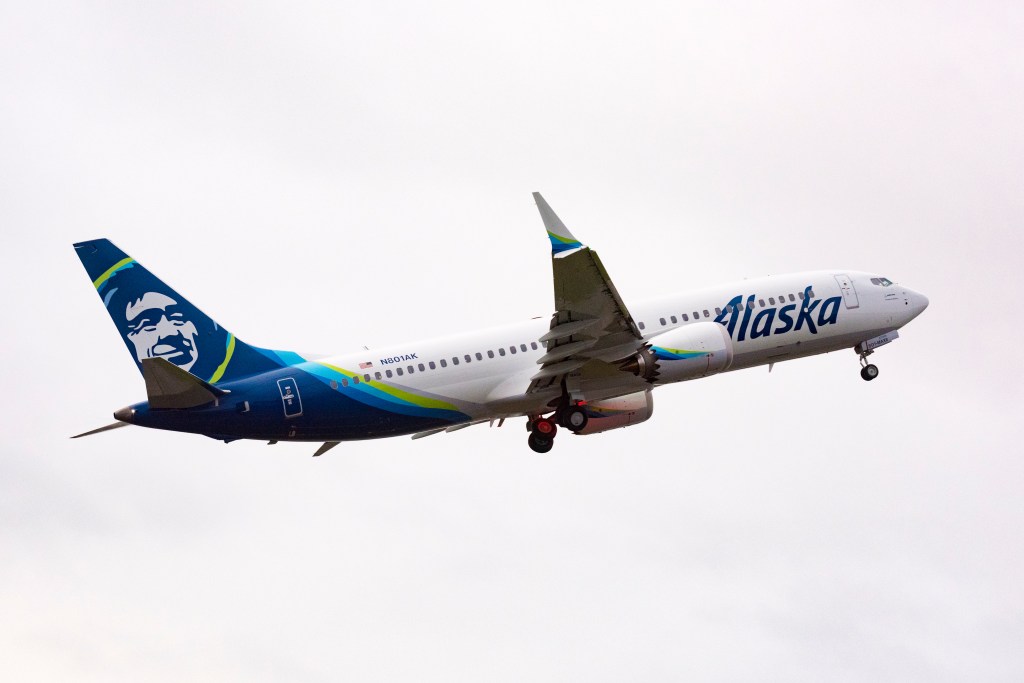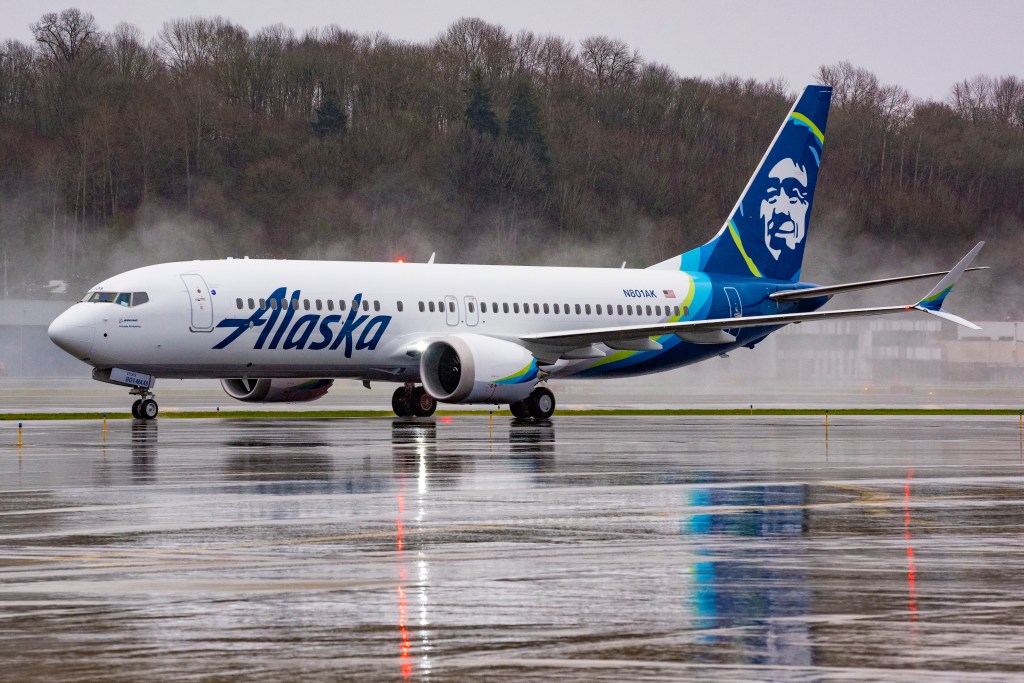Alaska Airlines takes delivery of first longer-range Boeing 737-8
Share

Alaska Airlines 737-8
New aircraft is part of our strategic fleet plan that emphasizes growth
Alaska Airlines continues to grow as we welcome delivery of the first Boeing 737-8 to our aircraft lineup – the next component of our strategic, long-term fleet plan that builds on our strengths and provides a road map for ongoing future success.
We proudly fly the youngest fleet of all U.S. airlines, and from 2024 through 2027, we are on track to add 15-25 new Boeing aircraft each year. We currently have firm orders for 80 more 737 MAX aircraft, and options and purchase rights for another 105. Our first 737-10 is scheduled for delivery in 2025.
The addition of the 737-8 and eventually the 737-10 to our fleet creates new opportunities for us to fly longer nonstop routes and maximize our revenue potential,” said Nat Pieper, senior vice president of fleet, finance and alliances at Alaska Airlines. “We have achieved terrific results with the 737-9 in guest satisfaction, economics and fuel efficiency, and we are excited for our future with the other 737 models.”
In March 2022, Alaska adjusted our existing 737-9 aircraft order with Boeing to include the bigger 737-10 and longer-range 737-8. The additional 737 models will enhance profitability and guest satisfaction by offering us more ways to deploy the optimal aircraft size and capability in each market we fly.


For example, we will add our new nonstop Anchorage-New York JFK seasonal route with the 737-8, launching June 13, 2024. Anchorage-JFK (at 3,386 miles) will become the longest flight Alaska operates, creating nonstop convenience between two of the most popular cities in our network.
Alaska’s aircraft orders
| Model | Delivered to date | Target Mix | Aircraft seats | Role in Alaska’s fleet |
| 737-10 | — | 120-140 | 190 | This model will be the largest, most efficient aircraft in our fleet |
| 737-9 | 65 | 80 | 178 | Ideal aircraft for long-haul, high-demand routes |
| 737-8 | 1 | 20-40 | 159 | Longest-range 737 best for high-performance and medium-sized markets |
Alaska is scheduled to take delivery of seven more 737-8s in 2024, with the next four slotted to enter the fleet in March. The 737-8, -9 and -10 all offer a common cockpit, common engines, and similar components.

Alaska’s regional carrier, Horizon Air, also continues to grow its fleet of jets. Over the next three years, Horizon will add nine new Embraer E175s, bringing its total to 50 by the end of 2026. Alaska’s regional partner SkyWest also operates 42 E175s on our behalf. Our combined fleet size of mainline and regional jets is currently 310.
Our guests will soon enjoy refreshed updates to our 737-800 aircraft. With modifications beginning in late 2024, we are investing $130 million to overhaul those cabins.
“It’s more important than ever that we deliver a consistent product to our guests,” said Todd Traynor-Corey, managing director of guest products at Alaska Airlines. “The updates we’re making to our older Boeing aircraft will provide a more consistent guest experience on our Boeing fleet by making the cabins look and feel more like our 737-9 and 737-8 aircraft.”
The enhancements to the -800s include a move to a 161-seat configuration with 16 seats in First Class and new seats in Premium Class and main cabin, all while maintaining the same space our guests are accustomed to right now.
The new First Class seats feature a footrest and seatback device holder, allowing our guests to relax in industry-leading seat pitch that is worth talking about: We are the only U.S. airline with an average of 40” pitch in First Class and 35” in Premium Class across our mainline fleet. Guests can expect these same improvements to be featured on new 737-8 deliveries beginning in the second half of 2024 with retrofits coming to the first five aircraft at a later date.
Since modifications of the new configuration are expected to be completed in 2026, a subset of the -800s will receive a refresh of the existing cabin in the first half of this year to improve the guest experience.


